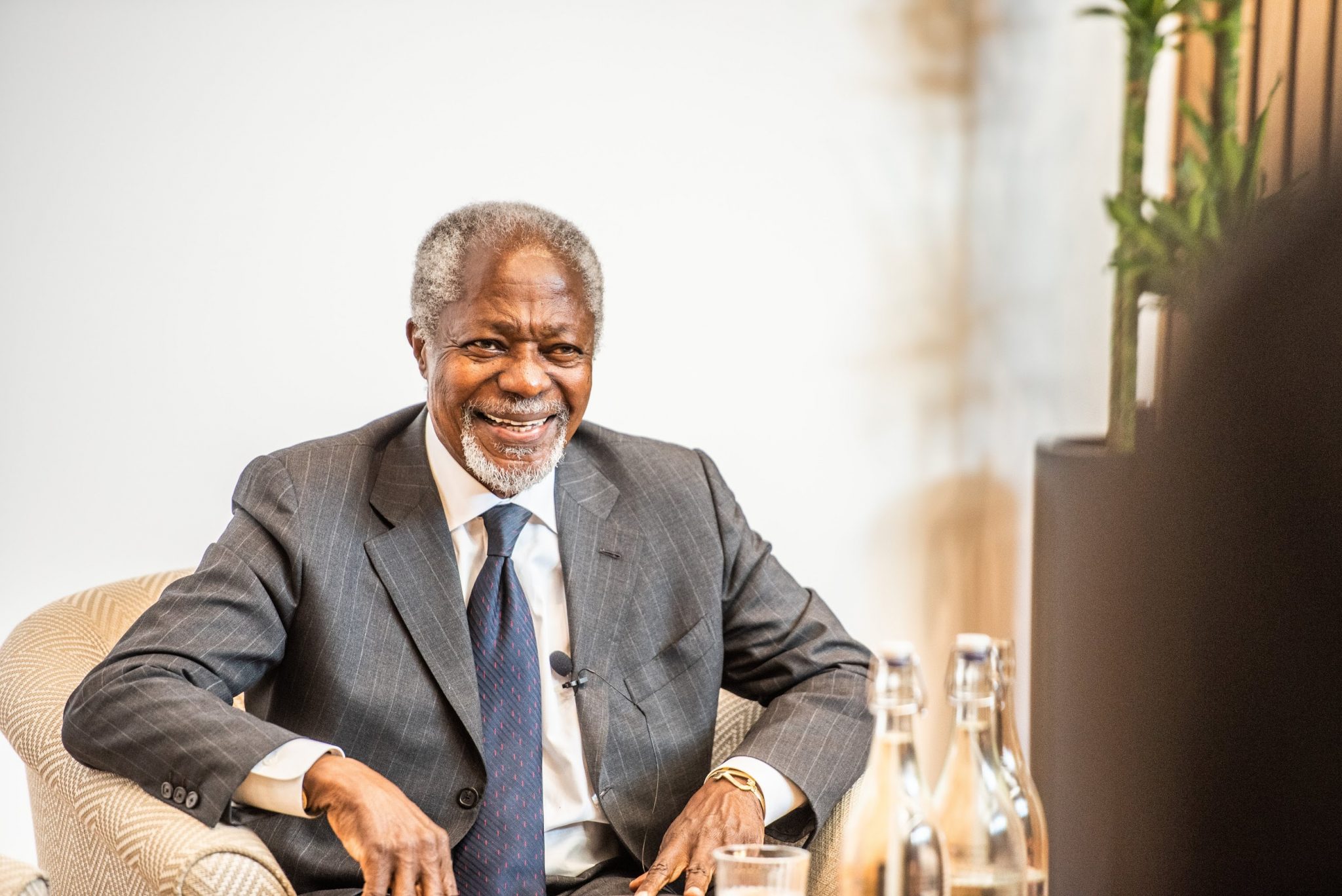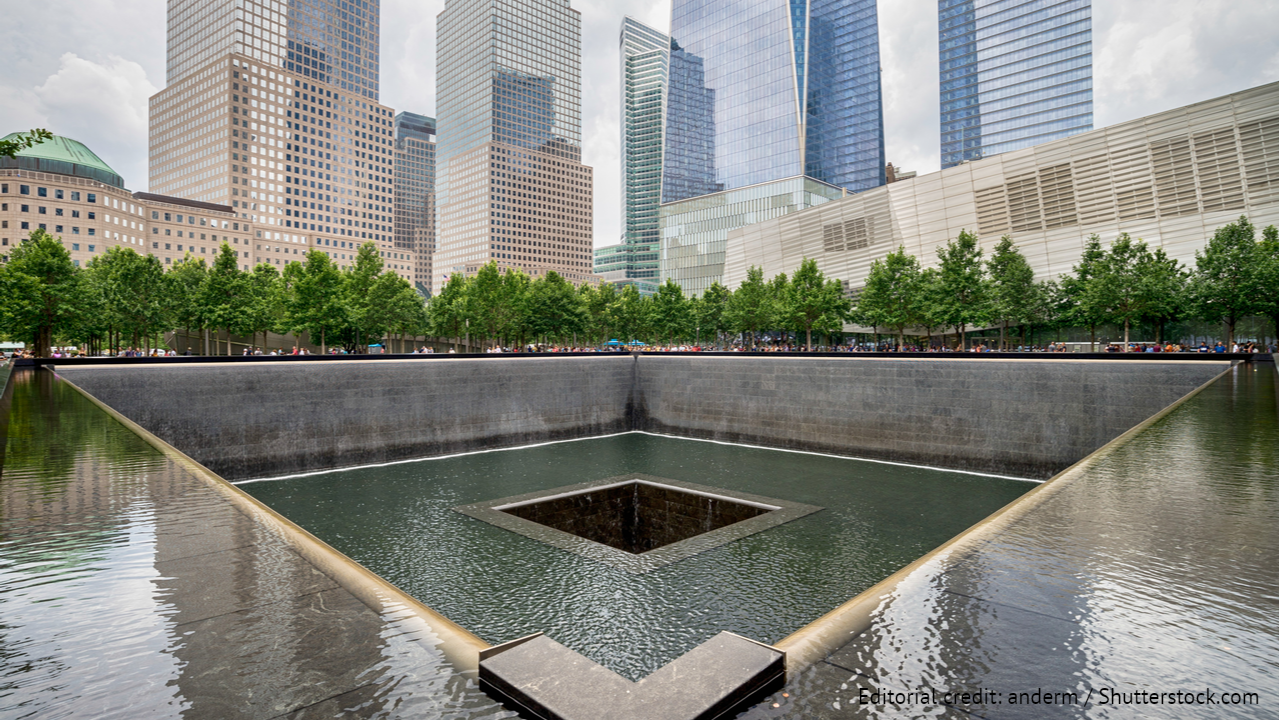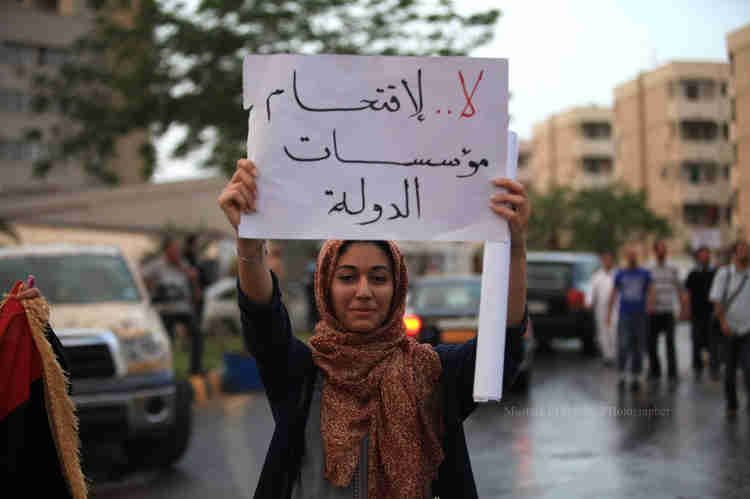“A History of the World in 100 Objects” – Episode 98:
As part of BBC Radio 4’s series entitled “A History of the World in a 100 Objects”, Kofi Annan talks to Antony Denselow about the “Throne of Weapons” made by the Mozambican artist Kester
In the background I hear sounds from a documentary film about people working with guns – but these are guns of peace, not of war. They are being cut up, melted down, welded together and re-shaped to make artworks in Mozambique. It’s the first time in this series that we can actually hear how one of the objects was made. It’s also the first time that we have an object that is a record of conflict, but which doesn’t glorify war, or the ruler who waged it. The object today is known as the Throne of Weapons. It’s a chair, or throne, constructed out of parts of guns which were made all over the world, and then sold to Africa.
“We don’t manufacture weapons, we sometimes don’t even have money to buy them. How do we get these weapons to kill each other?” (Kofi Annan)
If one of the defining features of the nineteenth century was the growth of mass markets and mass consumption, then the twentieth century might be characterised by mass warfare and mass killing. The two world wars, Stalin’s purges, the Holocaust, Hiroshima, Cambodia’s killing fields, Rwanda . . . if there is any positive side at all to this tale of genocide and devastation, it is perhaps that the twentieth century has recorded and articulated the suffering of the ordinary victims of war, the soldiers and civilians who paid with their lives or their limbs.
Across the world there are tombs of the “Unknown Soldier”, usually built as stone or metal monuments, and the Throne of Weapons is in this tradition. It is a monument to all the victims of the Mozambique Civil War. It’s also a record of crimes against a whole country, indeed a whole continent. And, most unusually for such a commemorative piece, it’s a work of art, which speaks to us of hope and resolution. The Throne of Weapons is about human tragedy and human triumph, in equal measure.
The nineteenth-century scramble for Africa resulted in the slicing up of the continent between Britain, France and Portugal, as the leading colonial powers alongside Germany, Italy, Belgium and Spain. After the Second World War, there was a move for independence throughout Africa, and from 1960 onwards it was – gradually – achieved.
But this separation from the European powers was often bitterly fought for. Perhaps because independence was so often achieved only after fighting, it created great problems for the new states, sometimes civil war. One man who’s had personal and professional experience of these problems is the Ghanaian diplomat and ex- Secretary General of the United Nations, Kofi Annan. I showed him the Throne of Weapons, and asked him why independence in Africa was so often followed by further conflict:
“I think we have to start on the premise that, given where they came from, most of these countries had not had experience of governing – running a nation, managing issues – and had to start almost from scratch. Given the history of their own countries . . . there were civil servants, but there were very few of them who had actually led and organised a country. And I think also the skills that one needs to fight for independence are not the same skills you require to govern. So there was quite a bit of learning on the job, and also jealousies between groups, and a feeling that one tribe, or one group, has more power or benefits than the other. And this often leads to tensions and conflict over scarce resources – tense and brutal at times.”
These fragile, inexperienced governments could look for support to both Communist east and Capitalist west, and both blocs were eager to enlist supporters. After the nineteenth-century colonial scramble for Africa came the twentieth-century ideological scramble. The consequence was a huge influx of arms to the continent, and a series of murderous internal wars. The Mozambique Civil War was among the bloodiest of them all.
Although it’s entirely made out of chopped-up guns, in its shape the Throne of Weapons looks like a conventional wooden armchair – the sort you might find in a kitchen or at a dinner table. But that’s the only conventional thing about it. The guns that make up this chair in fact track the twentieth-century history of Mozambique. The oldest, forming the back, are two antiquated Portuguese G3 rifles – appropriately so, as Portugal was the country’s colonial master for nearly five hundred years, until independence in 1975. That independence was won by a left-wing resistance movement, FRELIMO, which was supported by the Soviet Union and its allies. Which explains why all the other elements of this chair are dismembered guns manufactured in the Communist bloc. The arms of the chair are made out of Soviet AK47s. The seat is formed from Polish and Czechoslovakian rifles, and one of the front legs is the barrel of a North Korean AKM. This is the Cold War as furniture, the Eastern Bloc in action, fighting for Communism in Africa and across the world.
The first decades of independence in Mozambique were disastrous years of economic collapse and bloody conflict. When FRELIMO came to power, they formed a Marxist-Leninist state, which was at once hostile to its neighbours – white-controlled Rhodesia, now Zimbabwe, and apartheid South Africa. In response, the Rhodesian and South African regimes created and backed an opposition group to fight the new government. The guns in the Throne are the guns with which this civil war was fought, and it left a million dead, millions of refugees, and 300,000 war orphans in need of care. Peace came only after 15 years when, in 1992, a settlement was brokered, and the country’s leaders began to rebuild their state. But although the war was over, the guns were still very much present. It’s notoriously difficult to re-educate a militarised generation to take their place in a peaceful civilian society, and, in this case, many of the soldiers had known nothing but war. Here’s Kofi Annan again:
“It reminds me of the conflict in Sierra Leone, where lots of boy soldiers were involved. Soldiers as young as eight, ten, carrying Kalashnikovs almost as tall as they are, and trained to kill. I recall, as head of peacekeeping operations, touring Sierra Leone with some of our peacekeepers, and trying to see how we redeem these boys and prepare them for a life after this conflict. There are a couple of things which are absolutely essential if a society is going to . . . not so much forget, but to deal with, the past. They need to be able to work on reconciliation. You also need to look at the society, and ask the questions, ‘What happened?’, ‘How did we get here?’, ‘What can we do to ensure that this horror is not repeated?’ ”
The key challenge in Mozambique was to decommission the hundreds of thousands of surviving guns, and to equip the former soldiers and their families to rebuild their lives. The Throne of Weapons played an inspiring role in this recovery process. It was made as part of a peace project called Transforming Arms into Tools, which is still going today. Weapons once used by combatants on both sides were voluntarily surrendered under amnesty and, in exchange, the people who gave them up received practical tools – hoes, sewing machines, bicycles, roofing materials. The guns themselves were to be turned into works of art. The project was started in 1995 by the Anglican Bishop Dinis Sengulane, with the support of Christian Aid. Here he is:
“The purpose of the project is to disarm the minds of people, and to disarm the hands of people. Why should this world have hungry people? Why should this world have a shortage of medicines? And yet, the amount of money which can be made available, almost instantly, for armament purposes is just amazing, and I would say shocking.
“I felt I should be part of shaping that peace. And of course, we find in the book of Micah, in the Bible, and the book of Isaiah, in the Bible, where it says they will turn their swords into ploughshares, and people will sit under their trees and nothing will frighten them.”
The Throne was made by the Mozambican artist Kester. He chose to make a chair and call it a throne, which immediately makes a particularly African statement. Chairs, rather than stools, are rare in traditional African societies, reserved usually for tribal heads, princes and kings. They are “thrones” in the truest sense of the word. But this is a throne on which no-one is meant to sit. It’s not for an individual ruler, but it’s intended rather as an expression of the governing spirit of the new Mozambique – peaceful reconciliation.
Since the beginning of the project, more than 600,000 weapons have been relinquished and handed over to artists like Kester, to be disabled and turned into sculpture. The sculptures take many forms, but this piece seems to me to have a very particular pathos, precisely because it has been made in the shape of a chair. When we talk about chairs, we always speak of them as though they were human beings – we say they have arms, legs, backs and feet. So there is something particularly disturbing, I think, about a chair made out of weapons that were designed specifically to maim backs and arms, legs and feet. Members of Kester’s family were themselves maimed, as the artist explains:
“I wasn’t affected directly by the Civil War, but I have two relatives who lost their legs. One stepped into a minefield and she lost her leg. And another, a cousin of mine, lost his leg because he was fighting with FRELIMO.”
But, in spite of this, Kester made this throne as a means of conveying hope. The back of the chair is formed by two rifle butts and, if you look closely at them, it looks as though they have faces – two screw holes for eyes, and a strap slot for the mouth. They almost seem to be smiling. It’s a visual accident of course, but it’s one that Kester spotted and decided to exploit, because it denies the guns their central purpose, and it gives this work of art its fundamental, life-affirming, meaning. Here he is again:
“There is no conflict between us anymore. I didn’t carve the smile, it’s part of the rifle butt . . . the screw holes, and the marks left from where the strap was attached to the gun. I wanted to just use the gun as it was, not change it. So I chose the guns and the weapons that had the most expression.”
The last ten years in Mozambique have been one of the great success stories of post-colonial Africa. The Throne of Weapons is a monument to one of the most positive resolutions to emerge from those decades of devastating civil war.
In the next programme, we’ll be with one of the defining dialogues of the modern world, at the intersection of money and religion. The object I have chosen is a credit card . . . one designed for Islamic banking.
You can listen to the interview here



